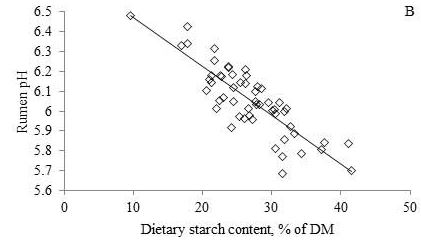



Is Replacing Starch With Non-Forage Fibre Sources During Heat Stress a Good Idea?
Feeding non-forage fibre sources during heat stress is not sufficiently replacing starch, claims a US expert.The 'common belief' is that replacing grains with non-forage fibre sources (NFFS) - stuff like beet pulp, citrus pulp, dried distillers grains, soybean hulls or wheat middlings - increases rumen function and pH.
However, dairy nutrition researcher Shane Fredin has stated that, after a review of 38 studies from 1993 to 2014, data suggests that replacing starch in this way is not be best strategy during heat stress.
In an article for the William H Miner Agricultural Institute, a research, education and demonstration farm in northern New York, Mr Fredin addresses two key questions
- Does the inclusion of NFFS at the expense of grains actually increase rumen pH?
- And how does the inclusion of NFFS compare with the inclusion of forage at improving rumen pH?
Heat Stress as a Problem
During months of high heat stress, total dry matter intake for lactating dairy cows often decreases and meal frequency is reduced, writes Mr Fredin. However, the amount consumed per meal increases, resulting in what’s commonly called ‘slug-feeding’.
Slug feeding negatively impacts ruminal fermentation, writes Mr Fredin. It results in an increased load of highly fermentable starch and a subsequent reduction in fibre digestion and rumen pH, potentially to the point of sub-acute ruminal acidosis.
Analysing Rumen pH
Figure 1 (panel A) compares the actual dietary starch content ( per cent of DM) with rumen pH when starch was replaced with NFFS (66 treatment means).
I anticipated that average rumen pH would decrease with increasing dietary starch, resulting in a negative slope, writes Mr Fredin. Surprisingly, average rumen pH was unaffected by dietary starch content. How does this data compare when starch is replaced with forage?
Figure 1 (panel B) compares the actual dietary starch content ( per cent of DM) with rumen pH when starch was replaced with forage (54 treatment means). As expected, average rumen pH decreased as dietary starch content increased.
Why is there a difference in rumen pH response when NFFS compared with forages replace starch in the diet? One reason is the difference in fibre digestibility; the rate of fibre digestibility in the rumen is greater for NFFS compared with forage. Also, due to small particle size, the physical effectiveness of fibre in NFFS is lower than the physical effectiveness of fibre in forage.
This can result in less rumination per unit of DM, lower saliva production, and therefore reduced rumen buffering capacity for NFFS compared to forages.
Furthermore, dry NFFS absorb more liquid compared with forages. Increased absorption of liquid by NFFS reduces the liquid passage rate out of the rumen.
About 10-15 per cent of volatile fatty acids produced in the rumen from fermentation leave with the liquid fraction, helping to reduce the total rumen acid load and increase pH. The absorption of rumen liquid by NFFS results in greater retention of volatile fatty acids in the rumen.




